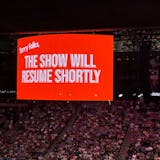Kempton Warr considers the Myers-Briggs personality test so accurate that it reveals his personality in an "almost freaky" way.
The Utah resident, who was shopping at the Mall of America recently, said that since he was 18, he's taken the Myers-Briggs Types Indicator (MBTI) five times. Now 24, he's taken the test twice this year alone, even though the results are always the same: He's an ENTP.
That puts him in conflict with his dad, who's an INTJ. In fact, Warr's whole family is into it. "I feel like it helps us figure out why there are things about my dad that annoy the crap out of me," he said.
The MBTI test isn't anything new. It's been around for decades, going in and out of vogue. But for some reason, the test with the catchy, four-letter result is peaking in popularity once again.
Developed by Katharine Cook Briggs and her daughter Isabel Briggs Myers in the 1940s, MBTI groups individuals into one of 16 personality types, based on four characteristics: extraversion/introversion (E/I), sensing/intuition (S/N), thinking/feeling (T/F) and judging/perceiving (J/P).
The test, offered for free on some sites such as truity.com and crystalknows.com, has become a craze in East Asia. On Xiaohongshu, a Chinese version of Instagram, more than 393,000 posts are tagged MBTI. Some bars in South Korea have even divided seating sections by MBTI type.
It's also become a phenomenon in the United States. According to 16personalities.com, more than 134 million tests have been taken in the United States on its website, one of the many websites that provide MBTI-like personality tests.
Tenzin Tashi, a Richfield High School student, discovered the test on TikTok during the pandemic. For her, it's a helpful tool for making friends on social media. "A lot of people have it in their TikTok bio," she said.
